 The aim of the present study was to analyze corn, soya, and sorghum samples for mycotoxins from Chile, Colombia, Argentina, and Bolivia. The survey was conducted between January and December 2021.
The aim of the present study was to analyze corn, soya, and sorghum samples for mycotoxins from Chile, Colombia, Argentina, and Bolivia. The survey was conducted between January and December 2021.Jog Raj*, Catalina Nicholls and Marko Vasiljević
PATENT CO, DOO., Mišićevo, Serbia
*Corresponding author: [email protected]
In Colombia and Bolivia, the mycotoxins analysis was performed with REVEL Q+MAX kits and in Argentina and Chile REVEL Q+ kits (Neogen) were used for the analysis of mycotoxins from these samples. The samples were analyzed for:
![]() Total aflatoxins
Total aflatoxins![]() Total fumonisins
Total fumonisins![]() Deoxynivalenol (DON)
Deoxynivalenol (DON)![]() Zearalenone (ZEN)
Zearalenone (ZEN)![]() T-2 toxin
T-2 toxin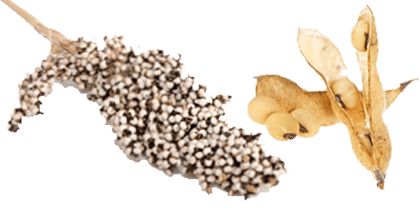

THE RESULTS OF THIS SURVEY ARE PRESENTED AS FOLLOWS:
CHILE Table 1 shows the average of each mycotoxin detected (ppb) in the corn samples from Chile. ZEN (73% samples) was the predominant mycotoxins detected whereas fumonisins, DON and aflatoxins were found to be present at lower average contamination levels.
⇰ 41 % of the samples had aflatoxins
⇰ 46% of the samples had DON
⇰ 59 % of the samples had fumonisins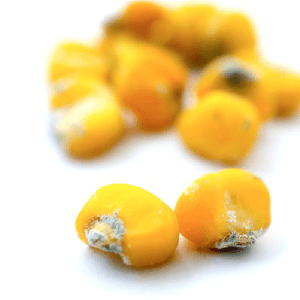
Table 1. Average of mycotoxins (ppb) detected in corn samples from Chile.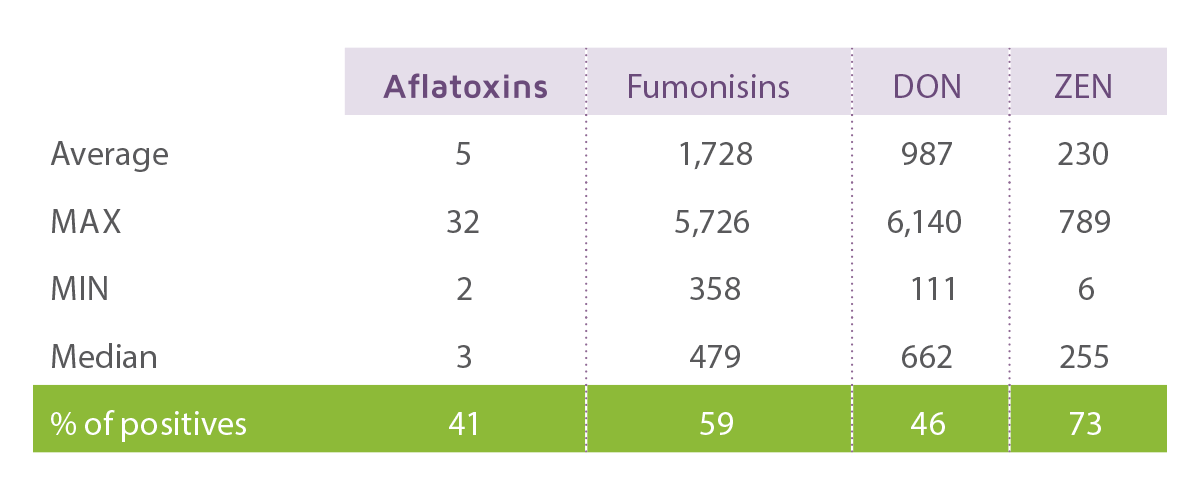
Figure 1. Number of myctoxins per corn sample from Chile.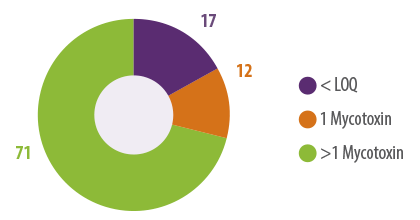
ARGENTINA The average of each mycotoxin detected (ppb) in the corn samples from Argentina is shown in Table 2. ZEN, DON, and T-2 were the predominant mycotoxins detected with a high occurrence, whereas aflatoxins and fumonisins were found to be present at lower average contamination levels.
⇰ DON was detected in 59% of the samples
⇰ Fumonisins were detected in 29% of the samples
⇰ Aflatoxins were detected in 35% corn samples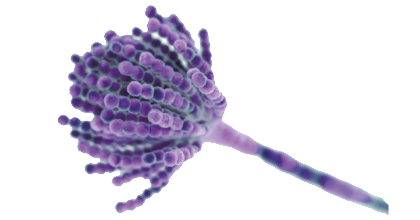
Table 2. Average of mycotoxins (ppb) detected in corn samples from Argentina.
BOLIVIA Table 3 shows the average of each mycotoxin detected (ppb) in the corn and sorghum samples from Bolivia.
In corn: In the case of sorghum:
Table 3. Average of mycotoxins (ppb) detected in corn and sorghum samples from Bolivia.

COLOMBIA Table 4 shows the average of each mycotoxin detected (ppb) in corn samples from Colombia. Fumonisins, ZEN, and DON were the predominant mycotoxins detected with low contamination levels found.
⇰ Fumonisins appeared in 100% of the samples
⇰ DON and ZEN were detected in 78% of the samples
⇰ T-2/HT-2 toxins were detected in 22% of the samples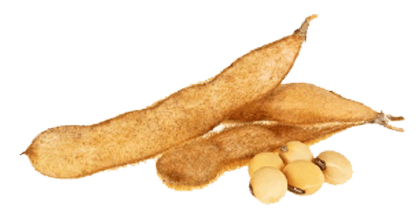
Table 4. Average of mycotoxins (ppb) detected in corn samples from Colombia.
Table 5 shows that ZEN was the main mycotoxin detected in soya samples from Colombia. ⇰ ZEN with an average of 111 ppb was detected in 93% of the tested samples. Table 5. Average of mycotoxins (ppb) detected in soya samples from Colombia.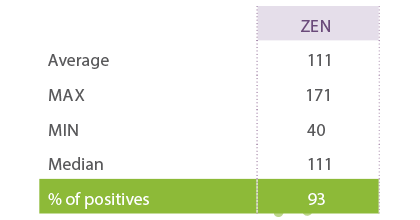
CONCLUSIONS In this mycotoxins survey, corn, soya, and sorghum samples from Chile, Colombia, Argentina, and Bolivia were analyzed for mycotoxins using ELISA. The analysis showed that the 71% samples of corn from Chile, and 100% corn/sorghum samples from Argentina, Bolivia and Colombia contained more than one mycotoxin. 93% of soya samples from Colombia contained only one mycotoxin. ⇰ Therefore, the majority of the corn and sorghum samples from Argentina, Bolivia, Chile and Colombia demonstrated the cooccurrence of mycotoxins as they contained more than 1 mycotoxin. There are no safe limits for cooccurrence of mycotoxins and, therefore, the use of appropriate mycotoxin binders is recommended to reduce their effects in animals and the risk of carryover from animals to humans.
 This survey clearly demonstrates that, from season to season, crops can be contaminated with mycotoxins, making regular monitoring of raw materials intended for animal consumption indispensable.
This survey clearly demonstrates that, from season to season, crops can be contaminated with mycotoxins, making regular monitoring of raw materials intended for animal consumption indispensable.
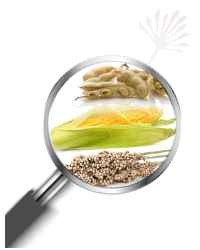



 Micotoxicosis prevention
Micotoxicosis prevention